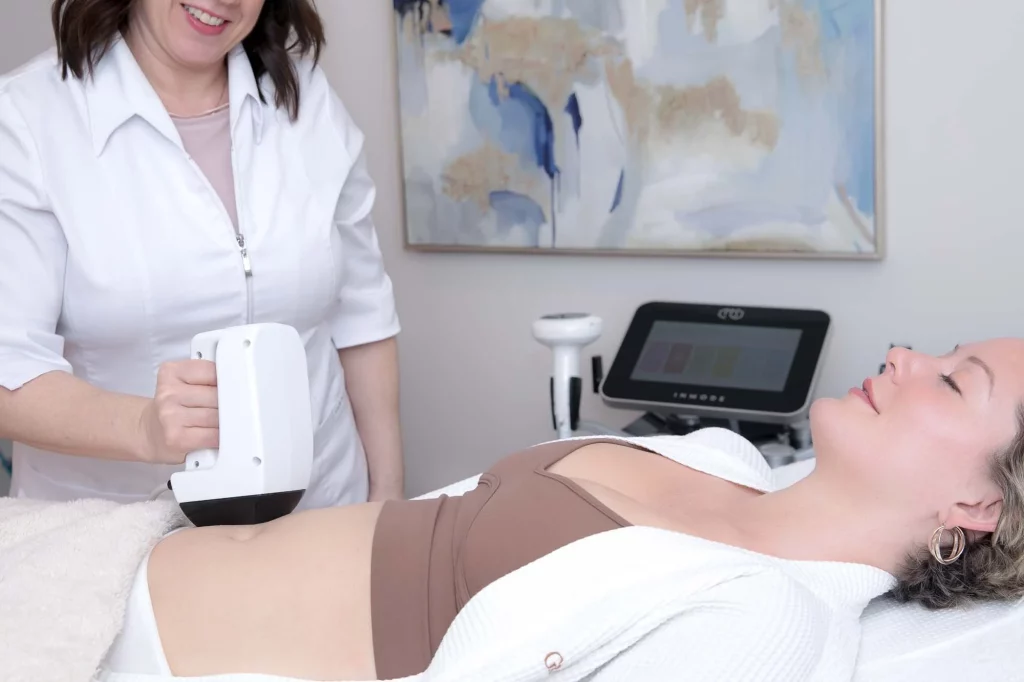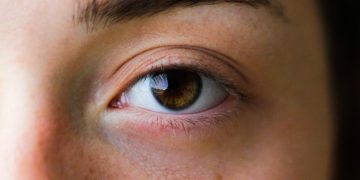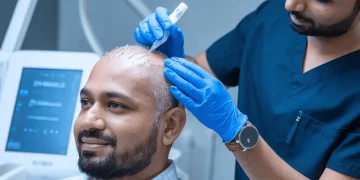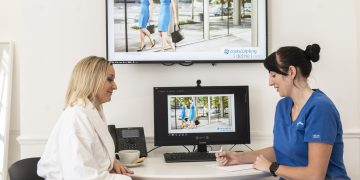The pursuit of a sculpted body has evolved far beyond the era of invasive liposuction and prolonged recovery. Today’s beauty industry thrives on non-surgical body contouring—a realm where science meets aesthetics, offering people the promise of reshaping their physique without anesthesia, incisions, or downtime. But in a market crowded with technologies claiming to melt, freeze, or tighten fat, a pressing question remains: What actually works?
From cryolipolysis to radiofrequency (RF) sculpting and ultrasound lipolysis, non-invasive fat reduction treatments have matured through years of refinement. Yet, effectiveness depends on science, patient suitability, and realistic expectations. This article dives deep into the science behind these leading modalities, compares their real-world performance, and examines the critical role of post-treatment care in sustaining results.
The Rise of Non-Surgical Body Contouring
Non-surgical body contouring—sometimes referred to as “fat reduction without liposuction”—emerged from the desire for safer, faster, and more convenient body transformations. With increasing consumer preference for minimal downtime and natural-looking outcomes, medical aesthetics pivoted toward energy-based devices capable of targeting localized fat and skin laxity without cutting or suctioning.
Modern contouring technologies operate on one or more of these scientific mechanisms:
- Thermal destruction of fat cells (via heat-based energy such as RF or ultrasound).
- Cryolipolysis, or controlled cooling that freezes and kills fat cells.
- Mechanical disruption or cavitation (via sound waves or vibration).
- Metabolic stimulation, encouraging the body’s lymphatic system to clear destroyed fat cells naturally.
Unlike surgical liposuction, which physically removes fat through suction, these non-invasive methods rely on biological elimination over several weeks. Results develop gradually but tend to look more natural.
Cryolipolysis: Freezing Fat to Shape the Body
Cryolipolysis—popularized by CoolSculpting—is arguably the most recognized non-invasive fat reduction technique. Its principle is elegant in simplicity: fat cells are more vulnerable to cold than surrounding tissues. By cooling targeted fat pockets to approximately –11°C, the process induces apoptosis, or controlled cell death, without damaging skin or muscle.
Over the next few weeks, the lymphatic system metabolizes and removes the dead fat cells, leading to up to 20–25% fat reduction in the treated area.
What It Works Best For:
- Abdomen (“belly fat”)
- Flanks (“love handles”)
- Thighs
- Double chin and upper arms
Benefits:
- Non-invasive, no anesthesia
- Minimal downtime (some mild swelling or numbness)
- Clinically validated with long-term data
Limitations:
- Results are gradual (2–3 months for full effect)
- Works best on pinchable, localized fat
- May cause temporary numbness or unevenness if not performed properly
Cryolipolysis remains a gold standard for fat-specific contouring, but it doesn’t tighten skin. Patients with skin laxity often benefit more from RF or combined protocols.
RF Sculpting: Heat, Collagen, and Tightening in Harmony
Radiofrequency (RF) body sculpting represents a different approach—using controlled thermal energy to heat the dermis and subcutaneous tissue layers. Temperatures between 40°C and 45°C stimulate collagen contraction and neocollagenesis, while higher intensities can induce apoptosis in fat cells.
Brands like Emsculpt Neo, Venus Legacy, and Morpheus8 Body have evolved the category by combining RF with electromagnetic stimulation to tone muscle while tightening skin.
What It Works Best For:
- Abdomen and waist contouring
- Skin tightening on arms, thighs, and buttocks
- Postpartum abdominal rejuvenation
Benefits:
- Improves both skin texture and firmness
- Stimulates collagen and elastin
- Non-invasive with immediate “lifted” appearance
- Works for various body types and ages
Limitations:
- Multiple sessions required for optimal results
- Mild redness and warmth may occur post-treatment
- Results depend heavily on device precision and operator skill
Unlike cryolipolysis, RF sculpting provides visible skin-firming effects, making it ideal for those with mild to moderate skin laxity in addition to fat deposits.
Ultrasound Lipolysis: Sound Waves That Target Fat
Ultrasound-based fat reduction, often known as ultrasound lipolysis or focused ultrasound therapy, uses acoustic energy to selectively disrupt fat cell membranes. The process causes fat cells to rupture, after which the body’s lymphatic system naturally eliminates the debris.
Devices such as UltraShape Power and Liposonix use focused ultrasound waves to penetrate deep fat layers without damaging skin or muscle, providing a more targeted reduction than older cavitation-based methods.
What It Works Best For:
- Flatter abdomen and waistline
- Areas with moderate subcutaneous fat
- Patients close to their ideal body weight
Benefits:
- Quick procedure (usually under 60 minutes)
- No downtime or discomfort
- Even fat reduction without surface irregularities
Limitations:
- Results are subtle and develop gradually
- Works best for patients with BMI under 30
- May require combination with RF for tightening
Ultrasound lipolysis is a precision-based option—best for fine-tuning contours rather than major fat removal. It’s a popular choice for maintenance and refinement after initial cryolipolysis or weight loss.

Post-Treatment Care: Sustaining the Sculpt
Non-surgical body contouring doesn’t end when you leave the clinic—it’s a process of collaboration between technology and lifestyle. Since fat cells destroyed by energy-based methods are cleared through metabolism, proper aftercare accelerates results and maintains long-term outcomes.
1. Hydration & Lymphatic Flow
Drinking adequate water and maintaining gentle physical activity supports the body’s lymphatic drainage, helping flush fat-cell debris efficiently.
2. Balanced Nutrition
While treated fat cells are gone for good, remaining fat cells can still expand with caloric excess. A balanced diet ensures results remain consistent.
3. Avoiding Extreme Heat or Cold
For several days post-procedure, patients should avoid saunas, ice packs, or direct sun exposure to prevent inflammation or skin sensitivity.
4. Compression Garments
Some clinics recommend light compression to support contour adherence and minimize swelling.
5. Maintenance Sessions
Since aging and metabolism change over time, maintenance treatments every 6–12 months can sustain firmness and definition.
The synergy between technology and patient discipline ultimately determines the longevity of body contouring outcomes.
Realistic Expectations: Transformation, Not Perfection
Non-surgical contouring delivers noticeable improvements, but not dramatic transformations akin to surgical liposuction. It’s most effective for individuals who are near their ideal weight, with localized fat deposits or mild laxity.
According to clinical studies:
- Cryolipolysis can reduce fat by 20–25% per session.
- RF sculpting can tighten skin and mildly reduce circumference by 1–3 cm.
- Ultrasound lipolysis can reduce waistline by approximately 2–4 cm over several sessions.
When combined strategically—e.g., cryolipolysis for fat reduction followed by RF tightening—the results can approximate surgical-like contouring with a completely natural appearance.
Expert Insights: The Future of Non-Surgical Contouring
Dermatologists and aesthetic physicians increasingly view non-invasive sculpting as part of a broader “body wellness continuum.” The next generation of technologies integrates AI-guided mapping, 3D body scanning, and multi-energy platforms capable of addressing fat, skin, and muscle simultaneously.
Dr. Elena Mendez, a Madrid-based body aesthetics specialist, notes:
“The future is hybrid—combining cryo, RF, and muscle stimulation within one session to treat multiple layers of tissue. Patients don’t just want fat loss—they want definition, tone, and skin health.”
Meanwhile, research into biological modulation—stimulating brown fat metabolism and cellular regeneration—suggests that future contouring may move from mechanical to metabolic optimization.
Conclusion: What Really Works?
So, what actually works? The answer lies not in one technology, but in personalized protocols that align with each patient’s anatomy, metabolism, and lifestyle.
- Cryolipolysis excels for localized, stubborn fat.
- RF sculpting leads in skin tightening and collagen renewal.
- Ultrasound lipolysis refines and smooths smaller areas.
- Combined protocols and diligent post-care yield the most harmonious, lasting outcomes.
The modern philosophy of body contouring is not about perfection—it’s about precision, patience, and partnership. In the right hands, and with the right expectations, non-surgical contouring can deliver genuine transformation—one guided by science, not illusion.













































